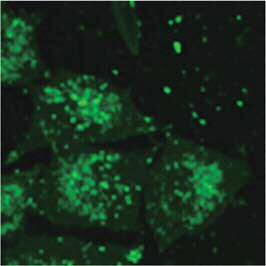CSIC and Universidad de Granada have developed a new family of antenna chromophores able to sensitize effectively luminescence of lanthanides to be applied as labelling probes for biomolecules.
Industrial partners specialized in fluorescent probes for biological research are being sought to collaborate through a patent licence agreement.
Easy and efficient biomolecules labelling Luminescent lanthanide probes are emerging as powerful tools in in vitro labelling of biomolecules and nanoparticles for monitoring of bioassays in diagnostics or drug discovery. Use of sensitizing chromophores or antennas as ligands in a lanthanide complex allows increasing luminescence intensity of the lanthanide ion. However, its current application is limited due to the difficulty to label the biomolecule in an easy way. The authors have developed two families of antenna ligands able to bind efficiently to biomolecules and sensitize luminescence emission of lanthanide cations, especially Europium III cations (Eu3+) and Terbium III (Tb3+). Assays performed with different peptides and proteins labelled with lanthanide complexes using the developed antennas showed between 2,000 and 12,000 fold luminescence increase with Tb3+ complexes and between 8,000 and 68,000 fold with Eu3+ complexes. Similarly, nanoparticles labelled with these lanthanide complexes have been used efficiently for tumour cells imaging.
A. Image of A549 tumor cells with nanoparticles labelled with the lanthanide fluorophore.
B. Lanthanides emission spectra.
Main innovations and advantages
· Easy and efficient generation of luminescent lanthanide sensors using novel antennas able to increase the intensity of the lanthanide’s fluorescence emission once bonded to the target.







